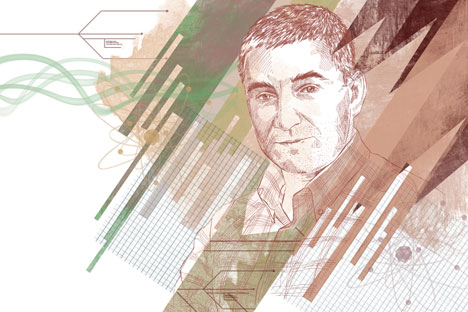
Click to enlarge the image. Drawing by Natalia Mikhailenko
 |
Click to enlarge the image. Drawing by Natalia Mikhailenko |
Nearly all founders of startups have to step down sooner or later. Dismissal is too strong a word, though. In most cases, there is either a change in duties or a change in the status of the founder, who most often becomes an advisor.
The founder (or founders) of a company normally performs one of the three major roles (or a few at a time): The CTO develops the product; the CEO develops the business and explores the business model; and the product manager identifies the properties of the product, its position in the market and the price. The CEO is often the product manager, as was the case with the company Parallels. Sometimes, the CEO performs all the three roles, as Mark Zuckerberg does.
The first conflict takes place when large amounts of the product start to be sold: quality, reliability and stability become the main characteristics, rather than its uniqueness. At that point, it is imperative for the company to ensure the professional development process. Otherwise, there is no way the product will be promoted. The main question is whether the current CTO is able to deliver. Sometimes the CTO cannot deliver, and a professional engineer should take his place.
The second conflict is with the founding CEO. The CEO is normally capable of pushing the business to a relatively small size. It is he or she that designs and tests the business model. The CEO’s main functions during the early phase are to look for large partners and to think a lot — about the model, strategy, marketing and prices.
However, at the next stage, the business has to be built up at an enormous pace and in totally different volumes. The founder may not always be active enough for this challenge. Therefore, it is sometimes a good idea to find a replacement. However, the old CEO finds it hard to report to the new one and may start to make mistakes.
Changing the management team is always a painful procedure. Few people can evaluate themselves sensibly. They have their own team and their own ambitions, but a new person comes in and they have to put up with the situation and fall in line.
What is the best way to change the founder?
There is no set answer, for it is always a complicated and unpleasant procedure.
It is important to sign documents with the founder stipulating the rights and liabilities of the parties at the earliest possible stage. It is necessary to talk to the person and understand their motivation. Psychologists can even be hired for this. Some people must be convinced that they have an important mission. Some need to make sure that they are respected. Others require financial guarantees.
There are positive examples, though. Parallels managed very smoothly and now has a professional CEO in Birger Steen. At Infratel, the founder combined the three roles. Still, at some point, a head of engineering and CEO was hired, and the founder remained CTO. There are more complicated situations, though, and conflicts that arise when teams are changed are one of the main reasons for the death of startups.
The opinion is first published in Russian in Sekret Firmy magazine.
Read more about Top 50 Russian startups.
All rights reserved by Rossiyskaya Gazeta.
Subscribe
to our newsletter!
Get the week's best stories straight to your inbox